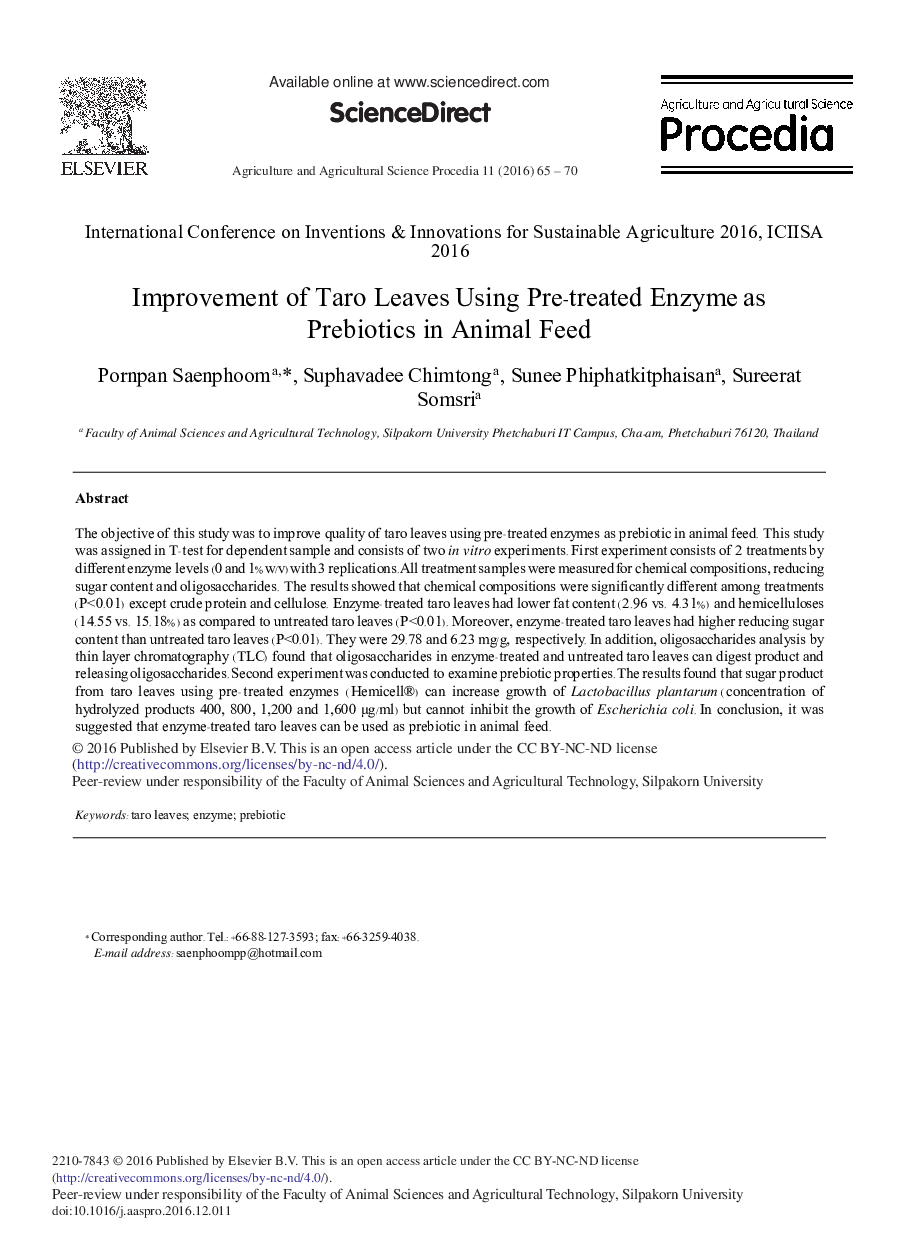| Article ID | Journal | Published Year | Pages | File Type |
|---|---|---|---|---|
| 5759799 | Agriculture and Agricultural Science Procedia | 2016 | 6 Pages |
Abstract
The objective of this study was to improve quality of taro leaves using pre-treated enzymes as prebiotic in animal feed. This study was assigned in T-test for dependent sample and consists of two in vitro experiments. First experiment consists of 2 treatments by different enzyme levels (0 and 1% w/v) with 3 replications. All treatment samples were measured for chemical compositions, reducing sugar content and oligosaccharides. The results showed that chemical compositions were significantly different among treatments (P<0.01) except crude protein and cellulose. Enzyme-treated taro leaves had lower fat content (2.96 vs. 4.31%) and hemicelluloses (14.55 vs. 15.18%) as compared to untreated taro leaves (P<0.01). Moreover, enzyme-treated taro leaves had higher reducing sugar content than untreated taro leaves (P<0.01). They were 29.78 and 6.23 mg/g, respectively. In addition, oligosaccharides analysis by thin layer chromatography (TLC) found that oligosaccharides in enzyme-treated and untreated taro leaves can digest product and releasing oligosaccharides. Second experiment was conducted to examine prebiotic properties. The results found that sugar product from taro leaves using pre-treated enzymes (Hemicell®) can increase growth of Lactobacillus plantarum (concentration of hydrolyzed products 400, 800, 1,200 and 1,600 μg/ml) but cannot inhibit the growth of Escherichia coli. In conclusion, it was suggested that enzyme-treated taro leaves can be used as prebiotic in animal feed.
Related Topics
Life Sciences
Agricultural and Biological Sciences
Agricultural and Biological Sciences (General)
Authors
Pornpan Saenphoom, Suphavadee Chimtong, Sunee Phiphatkitphaisan, Sureerat Somsri,
